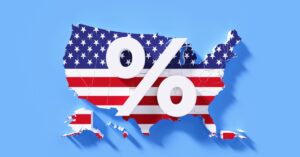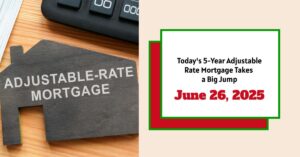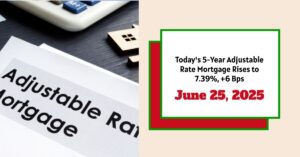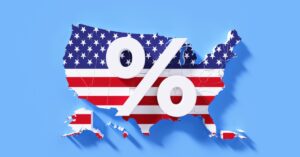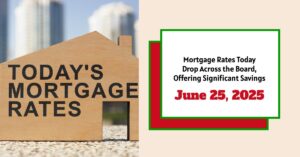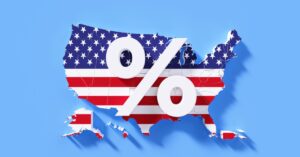Looking to buy a home and snag the best deal on a mortgage? On June 27, 2025, the states with the cheapest 30-year new purchase mortgage rates are New York, Colorado, California, New Jersey, Washington, D.C., Connecticut, Massachusetts, Pennsylvania, and Washington, where average rates hover between 6.61% and 6.71%.
On the flip side, the most expensive states for mortgages are West Virginia, Alaska, Iowa, North Dakota, and Nebraska, with rates ranging from 6.84% to 6.92%. Now, let's dive into what's shaping these numbers and how you can navigate this complex mortgage world.
States With Lowest and Highest Mortgage Rates Today – June 27, 2025
Why Do Mortgage Rates Vary So Much by State?
It's a question that pops up every time you start crunching numbers: why isn't there one single mortgage rate for the entire country? Well, the truth is, a lot of factors come into play at the state level.
- Different Lenders, Different Territories: Not all lenders operate everywhere. Some focus on specific regions, which means less competition (or more) depending on where you're looking.
- Credit Score Differences: States have different average credit scores. Places where folks tend to have lower credit will naturally see higher rates.
- Loan Size Matters: The average loan size varies by state, too. In pricier markets (think California or New York), bigger loans might influence the rates offered.
- State-Level Regulations: Each state has its own set of rules for the mortgage industry. Some regulations might add costs or complexities for lenders, which they pass on in the form of slightly higher rates.
- Risk Management Strategies: Lenders have their own ways of assessing and managing risk. One lender might view a particular market as riskier than another, and their rates will reflect that.
Think of it like buying gas. Prices fluctuate from state to state, and even from one gas station to another, due to location, taxes, competition, and operational costs. It's the same with mortgages!
The Lowest and Highest State Mortgage Rates: A Closer Look
Here’s a snapshot of the states with the lowest and highest 30-year new purchase mortgage rates as of today, according to Investopedia's analysis and Zillow's data:
States with the Lowest Mortgage Rates:
- New York: 6.61%
- Colorado: 6.63%
- California: 6.65%
- New Jersey: 6.67%
- Washington, D.C.: 6.68%
- Connecticut: 6.68%
- Massachusetts: 6.69%
- Pennsylvania: 6.70%
- Washington: 6.71%
States with the Highest Mortgage Rates:
- West Virginia: 6.84%
- Alaska: 6.87%
- Iowa: 6.89%
- North Dakota: 6.90%
- Nebraska: 6.92%
- Kansas: 6.92%
- New Mexico: 6.92%
It’s important to remember these are averages. Your personal rate could be higher or lower depending on your financial situation.
Don't Fall for Teaser Rates: What to Watch Out For
We've all seen those super-low mortgage rates advertised online. They're tempting, but often they're “teaser rates.” What does that mean? Here's a breakdown:
- Paying Points: To get that rock-bottom rate, you might have to pay “points” upfront (a point is 1% of the loan amount). That's extra cash out of your pocket.
- Perfect Borrower: Those best rates are usually reserved for borrowers with near-perfect credit scores. If your credit is good but not stellar, expect a higher rate.
- Smaller Loans: Sometimes, the lowest rates are offered on smaller-than-average loans. If you're buying a more expensive home, that teaser rate might not apply.
- Hidden Fees and Costs: Be sure to carefully review any mortgage offer to truly understand your costs, so there are no surprises down the road.
Read More:
States With the Lowest Mortgage Rates on June 26, 2025
Are Mortgage Rates Expected to Go Down Soon: A Realistic Outlook
National Mortgage Rate Trends: Where Are We Headed?
Over the past few months, we've seen some ups and downs in national mortgage rates. Let’s break down the trends:
- Recent Dip: Rates on 30-year new purchase mortgages have recently decreased, bringing the national average down to 6.75%. This is the lowest we’ve seen since April 2025.
- Mid-May Peak: Back in May, the 30-year rate hit a one-year high of 7.15%, so things are looking better now than they did just a few weeks ago.
- 2025 Low: In March 2025, we saw rates dip to 6.50%. While we're not quite there yet, the recent drop is encouraging.
- Long-Term Perspective: If we go back to September of last year, 30-year rates were actually at a two-year low of 5.89%. This underscores how much rates can fluctuate.
National Averages by Loan Type
Here's a quick look at the national average rates for different types of mortgages from Zillow:
| Loan Type | New Purchase Rate |
|---|---|
| 30-Year Fixed | 6.75% |
| FHA 30-Year Fixed | 7.55% |
| 15-Year Fixed | 5.74% |
| Jumbo 30-Year Fixed | 6.77% |
| 5/6 ARM | 7.25% |
Estimate Your Monthly Mortgage Payment
The biggest question on every homebuyer's mind is what their monthly mortgage payment will be. It's not just about the interest rate; several factors contribute to that final number.
- Home Price: Obviously, a more expensive home means a bigger mortgage and higher payments.
- Down Payment: The more you put down, the less you borrow, lowering your monthly bills.
- Loan Term: A 30-year mortgage will have lower monthly payments than a 15-year mortgage, but you'll pay more interest over the long haul.
- Property Taxes: These vary from state to state and even city to city and can significantly impact your mortgage payment.
- Homeowners Insurance: Protects your home and is a required part of most mortgage agreements.
- Interest Rate: As we've discussed, this is crucial and depends on your credit score, the type of loan, and the lender.
What Makes Mortgage Rates Go Up or Down?
Trying to predict mortgage rates is a bit like trying to predict the weather – experts can offer educated guesses, but it’s not an exact science. Here are the main factors I keep an eye on:
- Bond Market: Stay informed on the 10-year Treasury yield.
- Federal Reserve (The Fed): It determines the nation's monetary policy.
- Competition: The mortgage market is competitive, and rate variances will arise.
The Fed's Role: A Quick History Lesson
The Federal Reserve's actions have a big impact on mortgage rates. Over the past few years, we've seen the Fed take different approaches:
- Pandemic Response: In 2021, to combat the pandemic, the Fed bought billions in bonds, pushing mortgage rates down.
- Fighting Inflation: Starting in late 2021, the Fed began reducing its bond purchases. Then, in 2022 and 2023, it aggressively raised the federal funds rate, leading to a sharp increase in mortgage rates.
- Rate Cuts: In late 2024, the Fed began cutting rates, which helped bring mortgage rates down a bit.
- Pausing Rate Cuts: As of today, June 27, 2025, the Fed is holding rates steady, and we might not see another rate cut for a while.
Final Thoughts & Recommendations
Navigating the world of mortgage rates can feel overwhelming. Always compare rates from multiple lenders and don’t be afraid to negotiate. A good mortgage broker can be an invaluable asset during this process. Stay informed, be patient, and don't rush into anything you're not comfortable with.
Invest in Real Estate in the Top U.S. Markets
Investing in turnkey real estate can help you secure consistent returns with fluctuating mortgage rates.
Expand your portfolio confidently, even in a shifting interest rate environment.
Speak with our expert investment counselors (No Obligation):
(800) 611-3060
Also Read:
- Will Mortgage Rates Go Down in 2025: Morgan Stanley's Forecast
- Expect High Mortgage Rates Until 2026: Fannie Mae's 2-Year Forecast
- Mortgage Rate Predictions 2025 from 4 Leading Housing Experts
- Mortgage Rates Forecast for the Next 3 Years: 2025 to 2027
- 30-Year Mortgage Rate Forecast for the Next 5 Years
- 15-Year Mortgage Rate Forecast for the Next 5 Years
- Why Are Mortgage Rates Going Up in 2025: Will Rates Drop?
- Why Are Mortgage Rates So High and Predictions for 2025
- Will Mortgage Rates Ever Be 3% Again in the Future?
- Mortgage Rates Predictions for Next 2 Years
- Mortgage Rate Predictions for Next 5 Years
- Mortgage Rate Predictions: Why 2% and 3% Rates are Out of Reach
- How Lower Mortgage Rates Can Save You Thousands?
- How to Get a Low Mortgage Interest Rate?
- Will Mortgage Rates Ever Be 4% Again?
